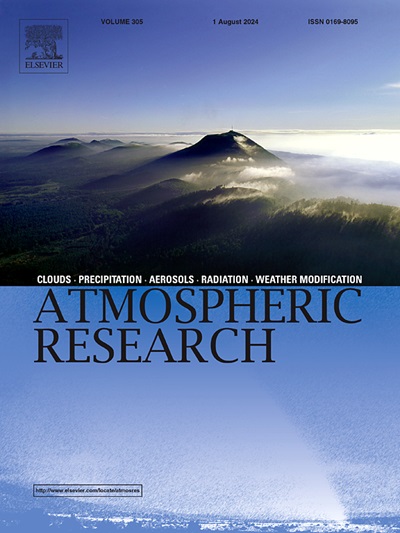Evaluating clear-sky assimilation of FengYun-3E microwave radiance data in predicting multiple tropical cyclones over the Western North Pacific
IF 4.5
2区 地球科学
Q1 METEOROLOGY & ATMOSPHERIC SCIENCES
引用次数: 0
Abstract
Since the successful launch and operation of the FengYun-3E (FY-3E) satellite, the assessment of its data quality and applications has garnered significant attention. By comparison with previous studies focusing on the assessment on a single case, this research assimilates the Microwave Humidity Sounder-2 (MWHS-2) and the Microwave Temperature Sounder-3 (MWTS-3) data to evaluate the track and intensity prediction of 19 tropical cyclones (TCs) over the western North Pacific (WNP). This comprehensive investigation seeks to unravel the contributions of microwave radiance onboard FY-3E to the initial fields in the multi-typhoon predictions. For each TC case, three experiments are carried out to evaluate the effect of microwave radiance data on clear-sky assimilation: the control experiment (CONV) assimilates only conventional data, while the other two experiments incorporate MWHS-2 (MWHS) and MWTS-3 (MWTS) data, respectively. The results indicate that MWHS and MWTS exert distinct effects on dynamical and thermodynamic variables across various atmospheric levels. The positive impact of MWHS and MWTS on the track and intensity forecast has been proven, respectively, with the root mean square errors reduced by 3.86 % for track, 4.76 % for maximum wind speed (MWS), and 7.78 % for minimum surface level pressure (MSLP) relative to CONV. For the three-day average forecast errors, the MWHS exhibits the lowest daily mean track error, while the MWTS primarily contributes to reducing the MSLP error on the second day and the MWS error on the first and third days.
对风云- 3e微波辐射资料晴空同化对北太平洋西部多个热带气旋预报的评价
自从风云3e (FY-3E)卫星成功发射和运行以来,对其数据质量和应用的评估已经引起了极大的关注。与以往以单例评估为主的研究相比,本研究利用微波湿度探测器-2 (MWHS-2)和微波温度探测器-3 (MWTS-3)资料,对北太平洋西部(WNP) 19个热带气旋的路径和强度预测进行了评估。这项综合调查旨在揭示FY-3E机载微波辐射对多台风预报初始场的贡献。针对每一种高温天气,分别进行了3个实验来评估微波辐射数据对晴空同化的影响:对照实验(CONV)仅同化常规数据,另外两个实验分别吸收MWHS-2 (MWHS)和MWTS-3 (MWTS)数据。结果表明,MWHS和MWTS对不同大气水平的动力和热力学变量有不同的影响。兆瓦时的积极影响和参与者在跑道上和强度预报已经证明,分别与均方根误差减少3.86%,4.76%,最大风速(多工作站系统),为7.78%,最低表面压力(MSLP)相对于CONV。为期三天的平均预估错误,mwh展品最低的每日平均跟踪误差,而参与者主要是有助于减少MSLP错误第二天和多工作站系统误差在第一和第三天。
本文章由计算机程序翻译,如有差异,请以英文原文为准。
求助全文
约1分钟内获得全文
求助全文
来源期刊

Atmospheric Research
地学-气象与大气科学
CiteScore
9.40
自引率
10.90%
发文量
460
审稿时长
47 days
期刊介绍:
The journal publishes scientific papers (research papers, review articles, letters and notes) dealing with the part of the atmosphere where meteorological events occur. Attention is given to all processes extending from the earth surface to the tropopause, but special emphasis continues to be devoted to the physics of clouds, mesoscale meteorology and air pollution, i.e. atmospheric aerosols; microphysical processes; cloud dynamics and thermodynamics; numerical simulation, climatology, climate change and weather modification.
 求助内容:
求助内容: 应助结果提醒方式:
应助结果提醒方式:


